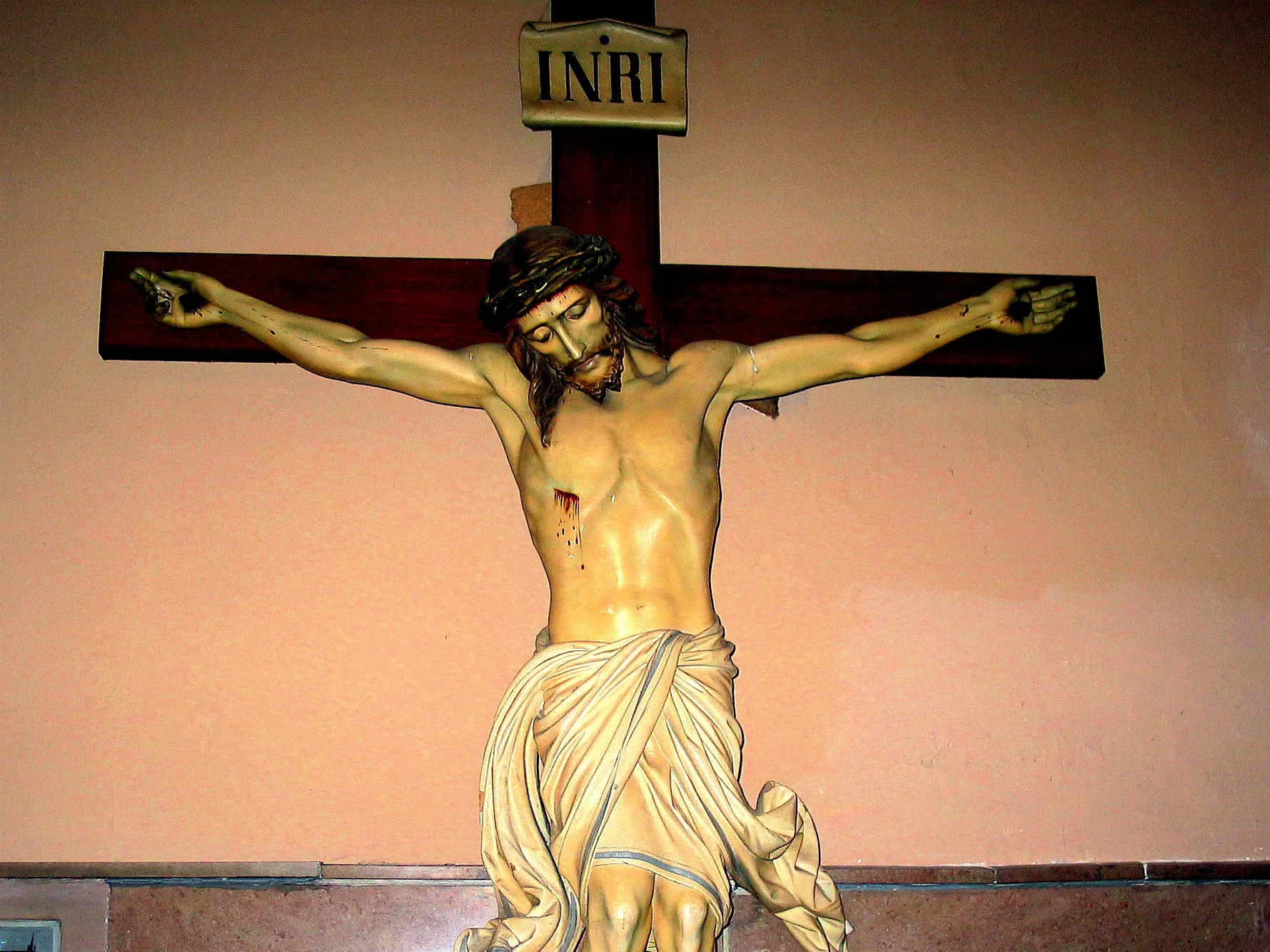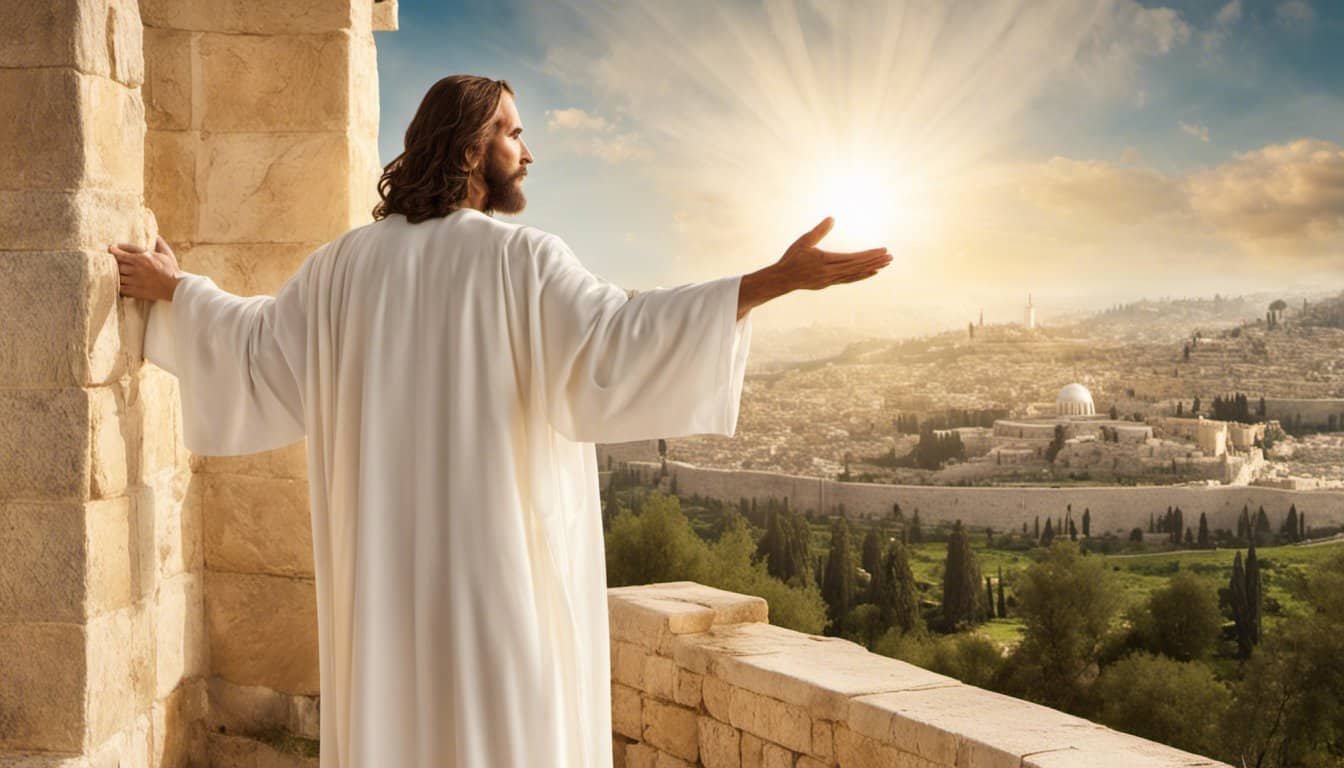The timing of Jesus Christ’s crucifixion is a topic of great historical and biblical significance. While the gospel accounts offer some insight, other evidence and controversies continue to ignite debates to this day. Curious to find out what we do know about the timing of this pivotal event? Keep reading to uncover what historians and scientists have discovered, as well as some fascinating explanations for the extraordinary events that accompanied Jesus’s death.
The Crucifixion of Jesus Christ

The crucifixion of Jesus Christ is one of the most significant events in Christianity. It is believed that Jesus was crucified on a Friday, which is now known as “Good Friday.” As a youth pastor, it is important to understand the historical and biblical evidence surrounding the time of Jesus’ crucifixion.
Here’s what you need to know about the crucifixion of Jesus according to historical evidence:

Chronology of Events According to Gospel Accounts:
- Jesus was arrested in the Garden of Gethsemane on Thursday night.
- He was taken to the high priest’s house and put on trial.
- Jesus was then taken to Pilate, the Roman governor, and was sentenced to death by crucifixion.
- Jesus was crucified outside the city walls, at a place called Golgotha or Calvary.
- He died at around 3 PM on Friday.
- His body was then taken down from the cross and placed in a tomb before the start of the Jewish Sabbath at around 6 PM.
Passover and Crucifixion Date Controversies:
There has been some controversy surrounding the exact date of Jesus’ crucifixion. Some scholars believe that it happened on a Wednesday or Thursday, while others believe it happened on Friday. The controversy arises from a perceived conflict between the synoptic gospels (Matthew, Mark, and Luke) and John’s gospel.
What Does the Bible Say About the Time of Crucifixion?
According to the gospels, Jesus was crucified on the day of preparation for the Jewish Sabbath, which was a Friday. Matthew, Mark, and Luke all state that Jesus died at the ninth hour, which was around 3 PM. John, on the other hand, states that Jesus was sentenced to death at around noon on Friday and died at the sixth hour, which was around 6 PM. The differences in the gospel accounts have led to some confusion.
Historical and Scientific Evidence About the Time of Crucifixion:
Several historical and scientific pieces of evidence support the crucifixion of Jesus on a Friday. For example, the writings of Josephus, a first-century Jewish historian, describe how the Jewish Sabbath was observed on Saturday and how crucifixions took place on Fridays. Additionally, a study of earthquake activity in the area in which Jesus was crucified supports the occurrence of an earthquake around the time of Jesus’ death.
Possible Explanations for the Darkness and Earthquake:
The gospels describe how a darkness fell over the land and an earthquake occurred at the time of Jesus’ death. Some scholars believe that these events were symbolic, while others believe that they were actual physical events. It’s possible that the darkness was caused by an eclipse or a dust storm, while the earthquake could have been caused by a tectonic shift.
The Hour and Significance of Jesus Christ’s Death:
The hour of Jesus’ death is significant in Christianity because it represents the sacrifice that Jesus made for the sins of humanity. The time of 3 PM is also significant because it corresponds to the Jewish time of prayer, which occurs three times a day. Additionally, Jesus’ death represents the fulfillment of Old Testament prophecies, and it serves as the foundation of Christian theology.
In summary, the historical and biblical evidence supports the belief that Jesus was crucified on a Friday, at around 3 PM. Although there are some controversies surrounding the exact date of the crucifixion, the chronology of events according to the gospel accounts provides a general timeline. As a youth pastor, it’s important to understand the significance of Jesus’ death and its importance in Christian theology.
What Does the Bible Say About the Time of Crucifixion?
According to the Bible, Jesus was crucified on a Friday in the afternoon. Mark 15:25 states that He was crucified at the third hour, which would be 9:00 a.m. in modern-day time. Although other biblical passages differ on the exact timeline of events, they all agree that Jesus was crucified and died on the same day, before sundown.
The time of Jesus’ crucifixion was significant as it aligned with the Jewish custom of sacrificing the Passover lamb, which took place between the hours of noon and 3:00 p.m. It also fulfilled Old Testament prophecies about the Messiah’s death, such as in Isaiah 53:5-6.

However, some scholars debate whether the Gospel accounts accurately reflect the historical timeline of events. This has led to different interpretations of time, with some scholars arguing that Jesus may have been crucified on a Wednesday, rather than a Friday.
Regardless, the hour of Jesus’ crucifixion remains consistent across the biblical accounts. It serves as a poignant reminder of the immense sacrifice that Jesus made for humanity and highlights the profound depth of God’s love for us.
It is essential to remember that the historical and biblical evidence surrounding the details of Jesus’ crucifixion should not overshadow the central message of the Gospel. Through His death and resurrection, Jesus offers salvation to all who believe in Him, regardless of the specifics of the timeline.
As Christians, we focus on the heart of the message, which is the sacrificial love of Jesus Christ and the eternal life that He offers. We unite in faith, rather than divide over details, and celebrate our shared belief in the risen Messiah.
Chronology of Events According to Gospel Accounts
When it comes to the timeline of events leading up to and following the crucifixion of Jesus Christ, it can be a bit confusing. It’s no secret that each of the four gospels – Matthew, Mark, Luke, and John – provide different perspectives and details about what happened. Here is a brief chronology of events, according to the gospel accounts:
- Jesus celebrates the Passover meal, known as the Last Supper, with his disciples on Thursday evening.
- After the meal, Jesus and his disciples go to the Garden of Gethsemane to pray, where Judas betrays Jesus and he is arrested.
- Jesus is put on trial – first before the Jewish high priest Caiaphas, then before Pontius Pilate, the Roman governor.
- According to the gospel accounts, Pilate sentences Jesus to death by crucifixion.
- After being scourged and mocked, Jesus carries his own cross to the place of execution – either Golgotha or Calvary – where he is nailed to the cross.
- According to the gospel accounts, at noon darkness covers the land and continues until 3:00 pm when Jesus dies.
- After Jesus’ death, he is taken down from the cross and placed in a tomb.
This timeline is based on the biblical accounts, but there are still controversies among scholars about the details. Some argue that Jesus was actually crucified on a Wednesday, not a Friday, and others believe that the darkness and earthquake were not literal, but metaphorical.
« The Art of Expository Preaching: A Comprehensive Guide
Unveiling the Mystery: The Oldest Book in the Bible and Its Significance »
Despite these controversies, the death and resurrection of Jesus Christ is the cornerstone of the Christian faith. Whether you believe in a specific timeline or not, the important message is that Jesus died for our sins and rose again, giving hope to believers all over the world.
In conclusion, here is a list of important points to remember about the chronology of events according to the gospel accounts:
- The Last Supper took place on Thursday evening.
- Jesus was crucified and died on either Golgotha or Calvary, at noon on Friday.
- Darkness covered the land from noon until 3:00 pm.
- Jesus was buried in a tomb after his death.
Passover and Crucifixion Date Controversies
There’s much debate on the timing of Jesus Christ’s crucifixion and how it lines up with the Jewish Passover. Some believe that Jesus was crucified on the 14th day of Nisan, the day of the Passover meal, while others argue that He was crucified on the day of preparation for Passover, the 13th day of Nisan. The exact date and timing of crucifixion have been hotly debated over the years, and no conclusive evidence has been discovered.
The Gospel accounts further complicate matters, with some suggesting that the disciples celebrated Passover with Jesus before His death, while others suggest that the Last Supper may not have been a traditional Passover meal. Additionally, there are accounts of conflicting opinions from the Pharisees and Sadducees, adding further confusion to the matter.

Despite these debates, it’s clear that the crucifixion of Jesus Christ was a pivotal event in human history, with profound significance for Christians. Ultimately, the exact date and timing of the crucifixion are secondary to the essential message of the Gospel—that Jesus Christ died for the sins of humanity, offering salvation to all who believe in Him.
As believers in Christ, it’s important to focus on the message of the cross rather than getting bogged down in the controversies over dates and chronology. The death and resurrection of Jesus Christ are pillars of the Christian faith, providing hope and redemption for believers.
Still, it’s fascinating to consider the historical and biblical evidence surrounding the timing of the crucifixion and the ways in which it aligns with Passover and other Jewish feasts. By delving into this area of study, we can deepen our understanding of the significance of Christ’s death and resurrection and appreciate the intricate details of the Gospel accounts.
Ultimately, whether Jesus was crucified on the day of Passover or the day before, the message of the cross remains the same. The death and resurrection of Jesus Christ represent the ultimate act of love and sacrifice that paved the way for our salvation and eternal life. As we contemplate the events of Good Friday and the celebration of Easter, let us hold onto this essential truth and rejoice in the hope and promise of our risen Lord.
Historical and Scientific Evidence About the Time of Crucifixion

When it comes to determining the exact time of Jesus’ crucifixion, it’s important to understand the historical and scientific evidence that exists. While the Bible gives us a general timeline of events, there are other sources of information that can help piece together a more complete picture of what happened on that fateful day.
Here are a few pieces of historical and scientific evidence related to the time of crucifixion:
-
Roman execution practices – We know that the Roman Empire used crucifixion as a common method of execution during this time period. From historical accounts, we know that a Roman crucifixion typically took several hours to complete, which agrees with the biblical accounts of Jesus hanging on the cross for three hours before his death.
-
Astronomical records – There are several ancient sources that describe unusual astronomical events around the time of Jesus’ crucifixion, including a darkness that fell over the land and an earthquake. While these events cannot be scientifically measured or proven, they do lend support to the biblical accounts of Jesus’ death.
-
Passover chronology – According to the Gospel accounts, Jesus was crucified on the day of Preparation, the day before the Jewish holiday of Passover. Based on the Jewish calendar and historical records, scholars have been able to narrow down the possible dates for Passover in the year of Jesus’ crucifixion. From there, it’s possible to make an educated guess about the exact day and time of his death.
-
Gospel accounts – Finally, the Gospel accounts themselves can be seen as a form of historical evidence. While they are not independent sources, they do provide valuable information about the events leading up to and during Jesus’ crucifixion. By comparing the different Gospel accounts and looking for common themes and details, scholars can gain a better understanding of what happened on that day.
It’s important to note that while these pieces of evidence can help us better understand the time of Jesus’ crucifixion, there is still some degree of uncertainty. Different scholars may interpret the evidence differently or emphasize different details. Ultimately, the exact time of Jesus’ death may be a matter of interpretation and debate within the Christian community.
With that in mind, here is a list of possible explanations for the darkness and earthquake that occurred during Jesus’ crucifixion:
- The darkness may have been a natural phenomenon, such as a solar eclipse or dust storm.
- The earthquake may have been caused by natural shifting of the Earth’s tectonic plates.
- The darkness and earthquake may have been supernatural events that were intended to symbolize the significance of Jesus’ death.
Regardless of the exact cause of these events, they represent important elements of the Christian faith and are remembered every year on Good Friday.

Overall, while the exact time of Jesus’ crucifixion may never be fully known or agreed upon, the historical and scientific evidence gives us valuable insights into the events of that fateful day. By studying these sources and reflecting on the significance of Jesus’ death and resurrection, we can deepen our faith and understanding of Christianity.
Possible Explanations for the Darkness and Earthquake
According to the Gospel accounts, darkness fell over the land for three hours during the time of Jesus’ crucifixion. Additionally, a great earthquake occurred, which was powerful enough to open tombs and bring the dead back to life. These events were recorded in Matthew 27:45-53, Mark 15:33-38, and Luke 23:44-45. But what could have caused them?
Some possible explanations for the darkness and earthquake have been suggested by historians and scientists. One theory is that a solar eclipse occurred, which could explain the darkness during the day. However, this theory has been disputed as a solar eclipse is typically too short in duration to account for three hours of darkness. Additionally, the Jewish Passover occurred during a full moon, which would make a solar eclipse impossible.
Another theory is that the darkness and earthquake were supernatural events caused by God to signify the significance of Jesus’ death. This interpretation is supported by the Gospel accounts, which describe the darkness as a sign of God’s wrath against sin. The earthquake could represent the tearing of the veil in the temple, symbolizing humanity’s direct access to God through Jesus.
Others have speculated that a dust storm or volcanic eruption might have caused the darkness and earthquake. The region where Jesus was crucified, known as Calvary or Golgotha, was near several fault lines and volcanic activity. Therefore, it is possible that a natural disaster occurred during the time of Jesus’ crucifixion.

Regardless of the cause of the darkness and earthquake, their significance remains as a symbol of Jesus’ sacrifice for humanity. The darkness represents the sin and separation from God that Jesus took upon himself on the cross, and the earthquake represents the world-shattering implications of that sacrifice. These events are compelling and thought-provoking elements of the crucifixion story that continue to inspire Christians to this day.
The Hour and Significance of Jesus Christ’s Death
The exact hour of Jesus Christ’s death has been a topic of much debate and speculation throughout history. However, according to the Gospel accounts, Jesus was crucified at around 9 a.m. on the day of Passover, which was a Friday.
The significance of Jesus’ death cannot be overstated. He willingly gave his life as a sacrifice for the sins of all humanity. His death on the cross was required to pay the price for our sins and to reconcile us to God. As the Messiah, Jesus fulfilled numerous Old Testament prophecies that foretold of a suffering servant who would be pierced for our transgressions and crushed for our iniquities.
Below are some of the events that took place leading up to Jesus’ crucifixion:
- Jesus was arrested in the garden of Gethsemane.
- He was brought before the Jewish high priest and questioned.
- Peter denied knowing Jesus three times.
- Jesus was handed over to the Roman authorities and sentenced to death by crucifixion.
At the crucifixion, Jesus was nailed to a cross and hung between two criminals. The Gospel accounts describe darkness covering the land from noon until 3 p.m., and an earthquake that occurred at the moment of his death.

The hour of Jesus’ death is significant because it fulfilled another prophecy from the Old Testament. In Daniel 9:27, it was predicted that the Messiah would be “cut off” after 69 weeks of years (or 483 years). This prophecy was fulfilled when Jesus’ death occurred during the Passover festival in AD 33.
Understanding the significance of Jesus’ death is a crucial part of the Christian faith. As followers of Christ, we believe that we are saved through faith in Jesus’ death and resurrection. By his sacrifice on the cross, Jesus made a way for us to be reconciled to God and to have eternal life.
In summary, the hour of Jesus Christ’s death was around 9 a.m. on the day of Passover, which was a Friday. The significance of his death cannot be overstated, as it fulfilled numerous Old Testament prophecies and made a way for humanity to be saved. As Christians, we look to the sacrifice of Jesus on the cross as the ultimate act of love and salvation.












